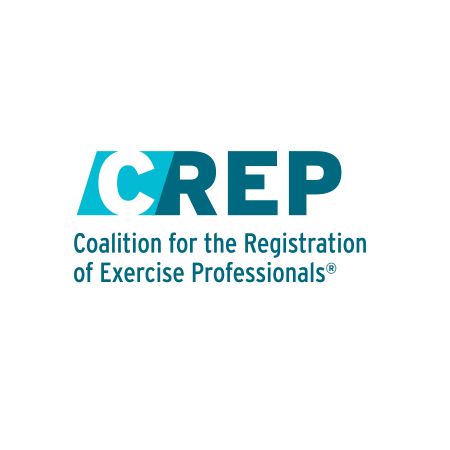
What are the qualities that employers look for when recruiting and hiring a personal trainer? Thus far, I have presented information outlining continuing education, considered a vital component of a personal trainer’s resume. In the following sections, I would like to consider an “outside” point of view from an employer’s perspective; to explore and consider other qualities that may be important in the ongoing development of a personal trainer, and the exercise science field in general.
Archer (2014) noted that personal training is a growing industry; the Department of Labor’s Bureau of Labor Statistics estimated that personal training would increase 24% between 2010 and 2020, an expansion greater than all other occupations. Such a statistic also indicates that employers will likely hire more personal trainers. However, some fitness organizations are still reluctant to recruit and hire; employers cite inconsistencies between personal trainers’ backgrounds, experience, and knowledge due to a lack of formal credentialing and education within the industry (Archer, 2014). Thus, to better recruit and hire qualified personal trainers, Archer (2014) proposed ten benchmarks to implement during the pre-employment screening process.

The first benchmark Archer (2014) proposed was consideration a personal trainer’s certifications. The author noted that organizations such as ACE, NSCA, ACSM and NSCF have founded the Coalition for the Registration of Exercise Professionals (CREP) (Archer, 2014). CREP’s mandate is to create an aggregate of certifying bodies that share higher, more rigorous standards and pre-requisites than other agencies. Additionally, CREP’s website serves as a medium for employers to reference and determine the quality and reputation of a personal trainer’s certifications.

Archer (2014) suggested foundational knowledge as the second benchmark. Due to a lack of regulation in the personal training industry, trainers may not require a degree to pass a personal training examination (Archer, 2014). This begs the question of whether personal trainers have enough knowledge in fields such as motor learning, biomechanics, anatomy, and exercise physiology to conduct themselves in a meaningful and efficacious manner. Such skill sets would develop a language and deep understanding of the human movement system; pre-requisites that are paramount when understanding human movement dysfunctions, performance enhancement etc.

Applying knowledge and improving communication is the third and fourth benchmark that Archer (2014) proposed, respectively. Archer (2014) reasoned that although knowing exercise science is an important step to treat clients, the application of knowledge is of equal importance and relevance; if a person cannot translate knowledge into a tangible result to the client, knowledge by itself serves no practical purpose. Thus, the need for improving communication, and teaching skills of a personal trainer is paramount (Archer, 2014). Archer (2014) suggested the development and implementation of mentorships as a method of bridging the gap between theory and application.

Knowledge of behavioral change/motivation, and a friendly personality are the fifth and sixth benchmarks proposed by Archer (2014), respectively. The author suggested that it is important to recognize the aforementioned qualities of people; if a personal trainer can access what drives a client, there may exist a better chance to affect change (Archer, 2014). Archer (2014) also suggested that possessing qualities such as empathy, good communication, and understanding would help facilitate relationship building and trust with the client; qualities also considered central in client retention.

Assessment, risk stratification and progressive program design constitutes the seventh benchmark of a personal trainer (Archer, 2014). Archer (2014) cited that due to an increasing deconditioned and overweight population, assessing the needs and risks of clients is essential; between 1997 and 2007, injury rates from exercise has risen above 4%, emphasizing the need to reduce exercise-related risk.

Understanding and implementing nutrition is the eighth benchmark of a qualified personal trainer (Archer, 2014). Archer (2014) noted that personal trainers could not operate in a vacuum whereby exercise and activity are considered the only components to restoring and optimizing health in a client. Archer (2014) cited the necessity of understanding the impact of good nutrition, and its influence on an individual’s health and longevity.

Understanding special conditions and populations is the ninth benchmark of a qualified personal trainer (Archer, 2014). Archer (2014) presented the need to address the diversification of physical and cognitive abilities, life experiences, lifestyles, health conditions, needs and expectations found among clients. The author argued that it is essential to align the skills of the personal trainer with the needs of the client. If there exists a deficit in knowledge that is also considered essential to helping a client, Archer (2014) submitted that personal trainers acknowledge the boundaries of their scope of practice, and refer out to a qualified professional when deemed necessary.

The tenth and final benchmark of a qualified personal trainer that Archer (2014) suggested was the ability to manage risk and properly document training. The author submitted that implementing a screening process (i.e., blood pressure and a movement assessment) would help determine the risk that an individual might experience. Additionally, a screening process would provide an opportunity to proactively mitigate the aforementioned problems associated with the client screening. Proper documentation and note taking would provide an opportunity to closely track and record changes in a client’s health status; steps considered paramount and necessary in other in other health professions (Archer, 2014).
In conclusion, continuing education is a partof determining the quality and value of a personal trainer; the overall appraisal Archer (2014) provided suggests that other key areas exist that should be explored. Applying vigilance to pre-employment screening will not only improve the perception and respect of an organization; it will also help produce high caliber personal trainers, and a safe and fertile environment to affect change in the lives of individuals.
References
Archer, S. (2014). 10 benchmarks for elevating the personal training profession. Idea Fitness Journal, 11(2), 40-48.
-Michael McIsaac
